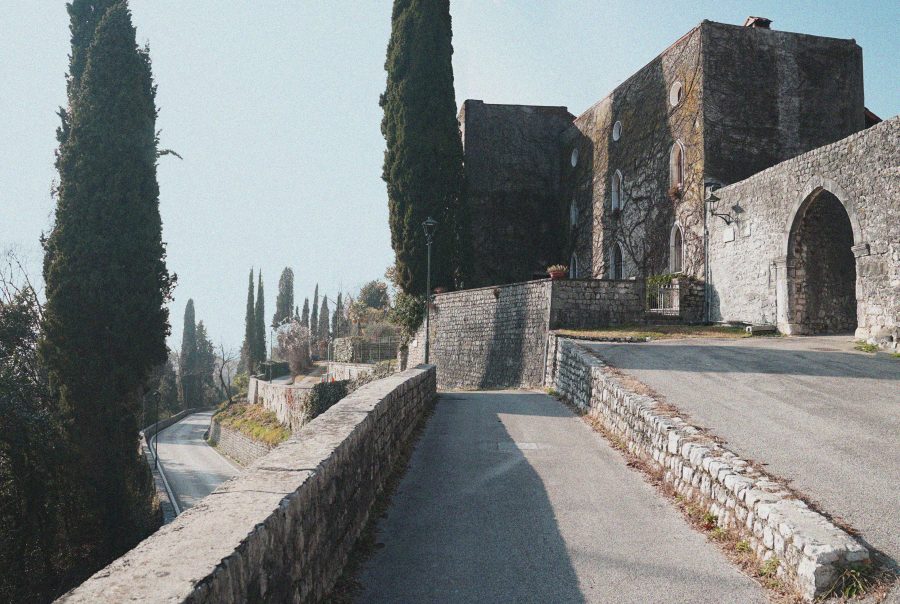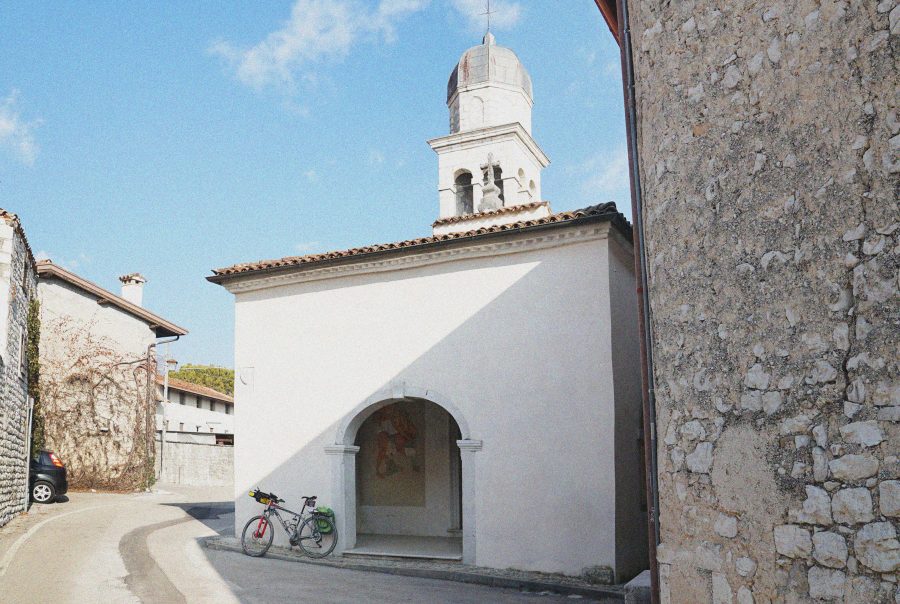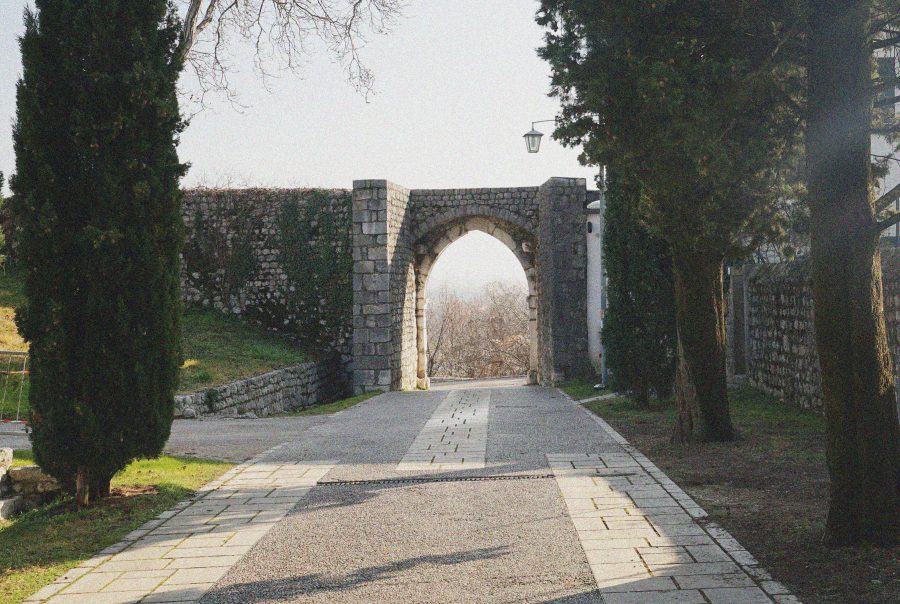Cycling through springs and meadows
All around, there are villages and cultivated countryside, tractors that plough shiny clods in winter or raise clouds of golden husk in summer. There are beautiful buildings – for example, Palazzo Fullini-Zaia, which dominates the square with its arches of 18th-century elegance: but it is not the only one that will steal your gaze. Even the clear running waters that cross the village make it an architectural wonder with a unique design, like a winged Venetian lion landing at the foot of the Friuli mountains. The chatty creek that crosses it, the Gorgazzetto, is one of the icy veins of the intense network of water that flows into the plains after crossing the bowels of the mountains. What about the UNESCO site in Palù? It’s time to jump on your bike and visit it. It is about two kilometres from here. “The essential is invisible to the eye” is the phrase from “The Little Prince” that best suits it. You will only see an expanse of grass. The rest is underground and still to be excavated. An underground prehistoric Pompei lies under the vast field. The Archaeological Museum of Friuli Occidente, in Pordenone, exhibits a selection of the enormous amount of materials found in the pile-dwelling site.
Here you should make a small sacrifice: to visit the Santissima and Gorgazzo springs, unmissable supplier of clear, cool Valchiusan freshwaters, and sources of the Livenza river, you will have to cycle the foothill road to Budoia, an “unfriendly” one for the cyclist. But don’t worry, it is only a few kilometres. First, the Santissima. A small water paradise and a sanctuary dedicated to the Trinity, preserving interesting works of art. A walk there in summer is like changing climate. In a few metres, you go from the heat to cool air. The Gorgazzo, three kilometres ahead, is an impressive cave located in a picturesque village. Daring and dangerous underwater explorations have brought divers to -212 metres. The transparency and colours from semi-precious stones are fascinating. Its abyssal depth is frightening.
Well, it’s time to get to know one of the most beautiful cycle paths I’ve ever ridden. In Budoia, after the short road stretch, you will enter the path following the GPS track and, apart from some welcome forays into towns that offer picturesque views and frescoed churches, it will be like riding on a flying carpet with gentle slopes. I promise they are gentle. The first encounter with History is in Castel d’Aviano. There are few but significant remains of the castle of the 10th century, originally belonging to the Patriarchs of Aquileia, that gives you an idea of its grandeur. Inside the walls, there is a 16th-century church with a crypt and several minor works of art. The church is so elegant as to suggest its attribution to none other than the great Vincenzo Scamozzi. The view of the plain is beautiful, as are the stone houses.
Here the houses were built with large exposed pebbles, as you can see. The same material has also been used in many towns of Bassa Friulana, but the stones are much smaller. Why? It was precisely the impetus of the waters that determined this difference in texture: losing strength with the decrease in slope, only the small stones reached the Bassa (for example, in Clauiano, see the brochure on the tour of Palmanova), while the heaviest stones stopped upstream. It is wonderful to consider this synergy between men, waters and materials, this story of architecture without a history. There is a legion of churches, often embellished with pictorial cycles worthy of attention. There isn’t space to report them all here. Only some, and the first is Santa Caterina d’Alessandria, which you will find on the road you are following, and precisely in Marsure, a hamlet of Aviano. Some popular and colourful frescoes in the apse are inspired by the stories of the Saint and are in a fairly good state of conservation.
From here to Montereale Valcellina, you can view the wonders and hear the subdued voices of nature. The path, with forgiving upward and downward slopes, winding through cultivated fields, woods, and stable meadows, is an absolute delight. Crossing the tarmac road near Malnisio, an agricultural relic will remind you of fragments of the past: on your right, you will see a procession of ten large mulberry trees, tormented like Michelangelo’s Prisoners, reminding you that silk was once cultivated throughout Friuli, even if it is now forgotten. If you are more inclined to technology than art or nature, the monumental power plant “Antonio Pitter”, which started operating in 1905, can be found in Malnisio. Today it is a museum and has been declared an asset of cultural interest by the Region. You will have to deviate a little from the proposed track, but only slightly, and not only cyclists can enjoy the visit.
Apart from the pretty centre and a small but eloquent archaeological museum that collects finds from prehistory to the Middle Ages, Montereale Valcellina has what I think is the most beautiful frescoed church of the whole route: San Rocco. It is located in the cemetery and is usually open (side door!). It is quite easy to find. Zaffoni, known as Calderari, may not have been an excellent painter, but he was a pupil of Pordenone, and something of the Master’s genius remained stuck to his brush. The apse is enlivened by a cycle of frescoes depicting the stories of the Virgin. It is a good refreshing installation, with lively, didactic narration, perfectly readable by the illiterate of the time. I invite you to linger on a detail: a vivid portrait of a man reading a book on the left wall, almost detached from the context. The parish priest Stefano da Grizzo contemplates his church absorbed and almost seemingly benevolent. So, well done, Calderari: here you get closer to your Master!
And then there is the beautiful, large square and the remarkable cathedral of San Mauro and many other valuable civil and religious works of architecture. Lastly, here are two pieces of advice. If you have any breath left, go back on the same road: the perspective is different from the opposite direction… and it’s so beautiful. For those who don’t want to go on riding… well, there is a train that from here will take you and your bike back to the starting point, in Polcenigo, for a refreshing aperitif in the square, overlooking the stream and the bastion of Piancavallo.








